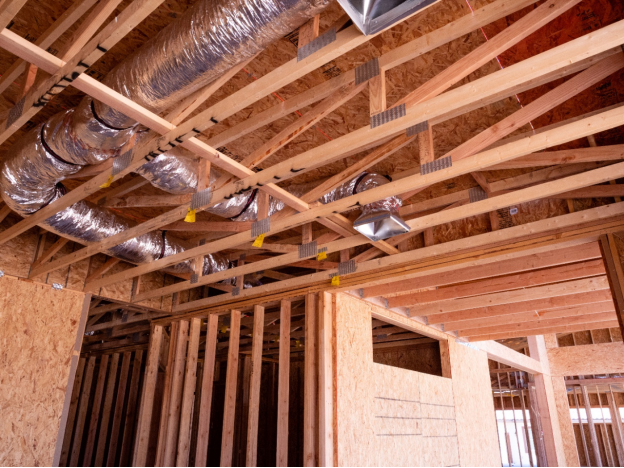Mini splits are growing in popularity for their versatility and benefits, such as zoned temperature control, energy efficiency, and retrofitting for older homes, which conventional HVAC can’t accommodate.
Are you thinking of installing a mini split? Is it right for your home? Here’s everything you need to know.
What Is a Mini Split System?
Mini split systems rely on an indoor and outdoor unit, just like conventional HVAC. Refrigerant circulates through the system and absorbs heat and humidity from the indoor air, traveling through copper tubing into the outdoor unit to be released.
The advantage mini splits have is that they have indoor units for each area – or zone – that needs to be cooled, unlike conventional HVAC that has one unit for the whole home. The cooled air is then pushed directly into the living space, which makes it more like an air conditioner without ducts.
Conventional HVAC vs. Mini Splits
Conventional HVAC and mini splits, or ductless systems, operate on the same principles for cooling your indoor air, but they differ in how they deliver cool air and how they’re installed. If you’re trying to cool an entire home, conventional HVAC is often the better choice.
Why Choose a Mini Split System?
Mini splits are ideal in certain situations, specifically when it comes to zoning and cooling individual spaces. You can use one or more air handling units to effectively zone your indoor space, and all of them connect to the outdoor unit, making the process quick and simple.
Each zone relies on its own temperature control and thermostat, so you can direct your heating and cooling only the spaces that are occupied. This helps you save a lot of money and energy by optimizing your usage.
If you have areas of your home where you don’t need to heat or cool, or your family wants more control over their preferences in different rooms, a ductless system can provide that. This is especially important if you have family members with health conditions that require precise temperature control and comfort.
Another advantage of mini splits is the minimally invasive installation. All it usually takes is a three-inch hole in the wall to attach the indoor and outdoor components using a conduit. You can choose where you want the outdoor condenser/compressor to go (within reason) to provide better access or make it inconspicuous. This may not be an option with conventional HVAC.
Because mini splits don’t have ducts, you can save a lot on the installation of ductwork throughout your home. Many older homes don’t have existing ductwork, so you have to start from scratch if you’re installing an HVAC system.
You also have options for where you place the air handlers. You can mount them in the wall or ceiling, use a floor-standing model, or place them in a drop ceiling, then operate via remote control.
In addition, not having ducts can do wonders for your indoor air quality. Cleaning ducts is a big part of your HVAC maintenance, as they collect dust and dirt over time. The debris may mix with the moisture, growing mold that pollutes your indoor air. Ductless systems don’t require this upkeep to ensure your home is clean.
Should You Choose a Ductless System?
Mini splits are incredibly versatile, but that doesn’t mean that you should jump right to that option. Here are some considerations to choose the right system:
Do You Have Pre-Existing Ductwork?
If you have ductwork, you can usually rely on the existing system for your conventional HVAC installation. If not, that’s a lot of extra work and money to install ductwork plus your system itself. Ductless is often the better choice in these situations, especially if you have converted rooms or additions in your home.
Are Some Rooms a Problem to Keep Comfortable?
Some rooms may be more difficult to heat or cool, depending on the direction they face, how close they are to the main unit, or how much airflow they get. If that’s the case, a ductless system can help you maintain temperature control without affecting the rest of your house.
Do You Use All of Your Rooms?
If you have a lot of unused space in your home, there’s no reason to waste the money and energy to heat and cool them. Cutting off your HVAC system to these rooms is a lot of work, but ductless systems can focus your heating and cooling to the spaces that you actually occupy.
Do You Want Individual Temperature Control?
If you’re always arguing over the thermostat, ductless systems are ideal for creating zoned areas with everyone’s preferences in mind. Aside from comfort, some family members may require warmer or cooler spaces, such as people with chronic illnesses, babies, and the elderly.
Is the ductless system the right choice for you? Contact us at ASI Heating and Air to see how we can help!










